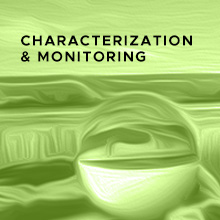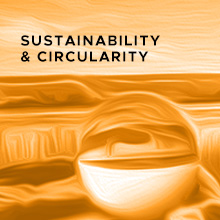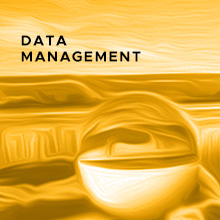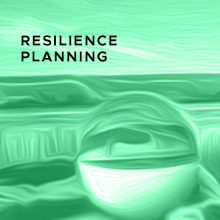2025 Global Summit Technical Sessions
See the full program for the 2025 Global Summit on Environmental Remediation, with nine technical sessions. Click on each session title to learn about the specific presentations.
 | Technical Session 1: Innovations in Geophysics, Hydrogeology, and Biogeochemistry to Advance Subsurface Characterization and Monitoring SolutionsThe combined effects of subsurface heterogeneity and inaccessibility impede the understanding of subsurface environments, leading to increased remediation costs, suboptimal remediation performance, and risks to human health and the environment. Geophysical imaging and emerging non-invasive sensing technologies, coupled with advanced processing techniques, improve the understanding of hydrogeological and biogeochemical conditions. This session will highlight novel uses of subsurface sensing to characterize and monitor contaminated sites. Topics will include new sensing technologies and analysis approaches to monitor subsurface fluxes of water, solutes, or gases with interpretation of data in terms of hydrogeology and biogeochemical reactions, including autonomous 3D monitoring of engineered remediation processes and the use of artificial intelligence to process and interpret complex datasets. |
 | Technical Session 2: Rethinking Remediation from Sustainability and Circularity Perspectives: Progress and Remaining ChallengesAt many sites, environmental remediation involves intensive, large-scale industrial activity that extends over decades. While multiple factors can influence the choice of remediation approaches and the resulting end state of a site, there is increasing recognition of the need to emphasize remediation approaches that (1) balance different sustainability outcomes (i.e., environmental, economic, and social); (2) achieve economically, institutionally, environmentally, and socially resilient end state solutions; and (3) embed circular economy principles. This session will explore both theoretical and practical aspects of sustainability and circularity as they relate to future use of a site, establishing systems for resource recovery/reuse, reducing environmental footprints, involving stakeholders, maximizing social and economic benefits, and more. |
 | Technical Session 3: Data Management as a Foundation for Environmental Decision-MakingSuccessful environmental remediation depends on informed decision-making at every level. Data management plays a crucial role in ensuring data availability for analysis, optimizing resource allocation, reducing costs, and maximizing environmental outcomes. Effective data management enables data users to transform raw environmental data into actionable insights, streamline workflows, enhance collaboration across teams, identify high-priority remediation areas, optimize resource allocation, and leverage interoperable systems to link datasets and improve transparency. It also builds confidence in decision-making by ensuring information is accurate and reliable. This session will highlight innovative tools and methodologies that enhance remediation efforts while ensuring cost-effective outcomes. It will explore the key attributes of robust data management—Visibility, Accessibility, Understandability, Interoperability, Trustworthiness, and Security (VAULTS)—and their impact on remediation success, along with topics such as improving adherence to FAIR (Findable, Accessible, Interoperable, and Reusable) data principles, advancing data management tools and techniques, best practices, and related topics. |
 | Technical Session 4: Modeling for Risk Evaluation and Remedy DesignIn the ever-evolving field of environmental remediation, the ability to accurately assess risks and design effective remedies is critical to protecting human health and ecosystems. This session will explore the latest advancements in modeling tools and methodologies for risk evaluation and remedy design. Topics will include innovative approaches that integrate predictive modeling, data analytics, and geospatial technologies to optimize remediation strategies. Potential talks include real-world case studies, innovative approaches to modeling contaminant fate and transport, assessing human and ecological risks, and designing targeted remedies. Discussions will highlight how advanced modeling techniques, including artificial intelligence and machine learning, are revolutionizing the field by reducing uncertainties, improving decision-making, and enhancing the efficiency of remediation projects. Attendees will gain insights into how advanced modeling can enhance decision-making, reduce uncertainties, and improve the efficiency of remediation projects, all in support of designing sustainable remediation solutions. |
 | Technical Session 5: Resilience Planning and Long-Term Stewardship: Extreme Weather and Long-Term ChangeResilience planning is essential for successful long-term stewardship of environmental remediation. The changing intensity and frequency of extreme weather events and wildfire, and longer-term shifts in environmental conditions, pose new challenges to remediation of complex sites. Shifting ground and surface water dynamics, warmer and drier conditions, more volatile weather, increasing or decreasing precipitation, and sea level rise have caused rapid ecological shifts, which require new and adaptive innovations in remedy design to best protect the environment and human communities into the future. This session provides a unique opportunity to share and amplify what is working and to learn from what is not. It will cover topics such as climate change vulnerability and resilience planning, information needs, innovative remedy performance monitoring and adaptive remediation approaches, co-benefits of resilient remediation and stewardship, emerging regulations and guidance, permit compliance, and other related topics. |
 | Technical Session 6: From Earth to Orbit: Autonomous Measurements and Remote SensingUnderstanding the spatial and temporal distributions of site characteristics is critical to the design and operation of a remediation strategy or site management plan. Autonomous approaches have the potential to streamline analysis of samples at the lab scale to facilitate high throughput, but also can be deployed at the field scale to perform reliable data collection and telemetry from sensor networks. Similarly, unoccupied vehicles and crewed/uncrewed airborne and spaceborne remote sensing have seen recent growth in environmental sensing and imaging by offering novel approaches to data collection and modeling that increase efficiency and reduce risk to field staff. This session will highlight the use of automated technologies, unoccupied vehicle sensing platforms, and airborne/spaceborne remote sensing to understand site characteristics and monitor field conditions. Topics will include, but are not limited to, novel capabilities and applications, challenges and possibilities using new technologies, and methods for analyzing and interpreting data. |
 | Technical Session 7: PFAS Progress: Evolving Science, Policy, and SolutionsAdvancements continue to be made in the evolving science, policy, and solutions relevant to managing per- and polyfluoroalkyl substances (PFAS) in the environment. This session is dedicated to advancing the understanding and management PFAS – exploring the latest research on PFAS fate and transport, remediation best practices, human health impacts, and analytical advancements. Topics will include evolving regulatory frameworks, risk assessment strategies, and cutting-edge treatment technologies aimed at mitigating PFAS contamination in water, soil, and air. This session will provide a collaborative platform for discussing practical solutions to PFAS challenges, from site disposition and waste management to emerging supply chain alternatives and policy-driven action. With a focus on bridging science and policy, the sessions will highlight real-world case studies, regulatory updates, and innovative approaches to managing these so-called “forever chemicals,” with the goal of sharing invaluable perspectives on the path forward to addressing PFAS. |
Technical Session 8: Revolutionizing Environmental Remediation with Artificial IntelligenceEmerging artificial intelligence (AI) technologies, including machine learning (ML), deep learning (DL), reinforcement learning (RL), and generative AI (GenAI), are transforming environmental remediation. These powerful tools help make sense of vast amounts of data, predict environmental risks, and improve decision-making for safety and remediation efforts. This session will explore how AI-driven techniques are being used to enhance environmental monitoring, cleanup, and risk management. Topics will include using AI/ML/DL/RL/GenAI to improve remediation strategies, automate complex environmental processes, detect pollution patterns, and identify key factors influencing environmental change. This session will also explore how AI can optimize real-time monitoring and resource allocation to make cleanup more effective and efficient. Applying these advanced AI tools can better protect our environment, respond to threats faster, and develop smarter, more reliable solutions for the near- and long-term future. |
 | Technical Session 9: Achieving Remediation End States: Turning Vision into RealityThroughout a remediation project, it is critical to employ proactive remediation strategies that address systemic issues, minimize risks, and ensure long-term sustainability. The session will include case studies presenting successful remediation projects showcasing proactive remediation techniques to achieve desired end states. Topics to be addressed include technology-driven solutions that leverage advanced analytics, automation, and artificial intelligence; adaptive management; stakeholder collaboration; and other approaches that streamline remediation efforts and achieve optimal outcomes. This session will explore innovative approaches to enhance efficiency and effectiveness, transform challenges into opportunities through strategic remediation practices, and turn vision into reality while ensuring operational resilience and sustainability. |
General Poster SessionThe General Poster Session is open to all topics relevant to the remediation of complex sites. Examples include studies on characterization of contaminated sites; contaminant fate and transport; contaminant interactions and co-contaminant effects; conceptual model development and testing; chemical, physical, hydrological and microbiological controls over contaminant mobility; strategies and remedy development; and others. The selected posters will be announced in early September.
Sign up to receive the RemPlex newsletter. |